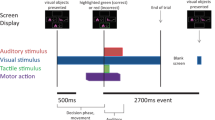Abstract
Functional changes in the organisation of neuronal circuitries are generally used to explain parkinsonian motor symptoms and levodopa-induced dyskinesias. Based on information from histology and neurophysiological microrecordings of specific basal ganglia nuclei, the most widely accepted scheme is based on a central loop which starts in the cerebral cortex, makes multiple relays in the basal ganglia, and returns to the cerebral cortex. Transcranial magnetic stimulation studies, however, reveal no significant differences in the excitability of the motor cortex between normal subjects and patients with Parkinson’s disease. Furthermore, electrophysiological and audiospinal facilitation studies indicate that the activity of reticular nuclei is altered in Parkinson’s disease. It therefore appears that a circuit with the cortex as the only recipient of basal ganglia output is an oversimplification. This paper explores the relationships between various basal ganglia nuclei and proposes a subcortical pathway via which modifications in the basal ganglia may influence motor function.
Similar content being viewed by others
Author information
Authors and Affiliations
Rights and permissions
About this article
Cite this article
Delwaide, P., Pepin, JL., De Pasqua, V. et al. Projections from basal ganglia to tegmentum: a subcortical route for explaining the pathophysiology of Parkinson’s disease signs?. J Neurol 247 (Suppl 2), II75–II81 (2000). https://doi.org/10.1007/PL00007765
Issue Date:
DOI: https://doi.org/10.1007/PL00007765




